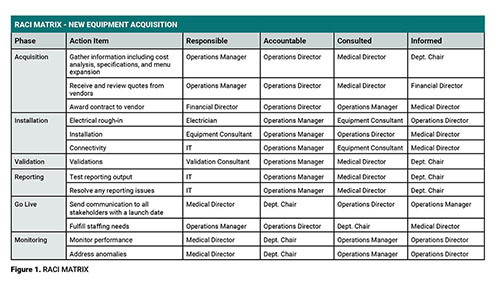
Strategic initiatives are an essential part of laboratory medicine. They involve making high-level decisions that align with the organization's mission and vision statement. Unlike tactical planning, which focuses on day-to-day operations, strategic planning takes a long-term view and considers the global impact on all levels of the laboratory’s operations.
Implementing change is challenging, especially for small- to medium-sized organizations that lack the resources for change management. In most cases, external consultants must be brought in to facilitate the change management process. In addition, there are several stages of strategic planning, including information gathering, data analysis, strategy formulation, implementation, and evaluation.
Unlike tactical planning, strategic planning also involves collecting appropriate data by observing current and projected conditions from social, technological, economic, environmental, and policy factors. The tools for information gathering involve brainstorming, focus groups, and interviews.
To facilitate the strategic planning process, laboratorians can use various techniques to analyze data, including histograms, graphs, scattergrams, fishbone diagrams, storyboarding, Pareto analyses, and Delphi analyses. Successful strategic planning requires a thorough understanding of the organization’s strengths, weaknesses, opportunities, and threats, or SWOT analysis. This process classifies internal factors as strengths and weaknesses and external factors as opportunities and threats. SWOT analysis helps guide marketing strategies and is particularly useful when implementing new technology or processes.
SWOT ANALYSIS FOR IMPLEMENTING A NEW PROGRAM
The following is an example of how to use the SWOT analysis approach from a strategic point of view.
Strengths: The program will use the latest technology and instrumentation, excess technical capacity that can be utilized, strong leadership support, and sufficient financial resources.
Weaknesses: Shortage of staff, morale issues, inadequate courier system, lack of pathologists, limited experience in providing multihospital/client laboratory information system services, turnaround time issues.
Opportunities: Expanding the test menu and increasing revenue.
Threats: Competition from other laboratories and reduction in reimbursement.
STRATEGIES TO IMPROVE THE DECISION-MAKING PROCESSES
Decision-making techniques can be used after the data-gathering stage. The options vary from voting techniques such as unanimity, majority, and plurality. Autocratic or multicriteria decision-making techniques can be used to evaluate and rank ideas. It’s important to note that this process is not the result of a single individual’s creation but rather is derived from a committee.
IMPLEMENTATION STRATEGIES FOR LAUNCHING NEW SYSTEMS
When implementing a new strategic program, it’s important to assign tasks to the right people, using the responsible, accountable, consulted, and informed (RACI) matrix. For example, when launching a new instrument, laboratorians should create validation protocols and provide technical training to ensure that staff are competent with the new system. Testing staff competencies is an important way to make sure they’re proficient. Moreover, it is also critical to discuss quality control requirements, reporting criteria, and billing. Finally, evaluate the processes using key performance indicators.

CHANGE AND COMMUNICATION MANAGEMENT
Strategic planning involves several key elements essential for ensuring a successful change process. One important aspect is developing a communication strategy and plan that aims to keep employees informed and up to date throughout the entire lifecycle of the change. This means educating employees on the different stages associated with the change model and providing them with the necessary tools to be successful, such as information, resources, and training. It also means assigning employees tasks aligned with their knowledge and skills, setting clear objectives, direction, and goals, and trusting them with information. By doing so, fear, anger, and anxieties can be mitigated, and employees can receive timely feedback and positive reinforcement to help them stay motivated and engaged.
To ensure the success of a new initiative, it is important to have a clear plan for monitoring and measuring progress. This should include specific deliverables and timelines that individuals and teams are held accountable for. Soliciting feedback is also essential to identify areas where support is needed to achieve success. Encouraging teamwork and emphasizing its importance can help to facilitate a successful shift from an individual-oriented mindset to a team-oriented one. Rewards and recognition should be aligned with this value to promote a culture of collaboration and mutual support.
Mahesheema Ali, PhD, NRCC, FADLM, is section head of clinical chemistry, toxicology, and point-of-care testing at The Metro Health System in Bay Village, Ohio. +Email: [email protected]